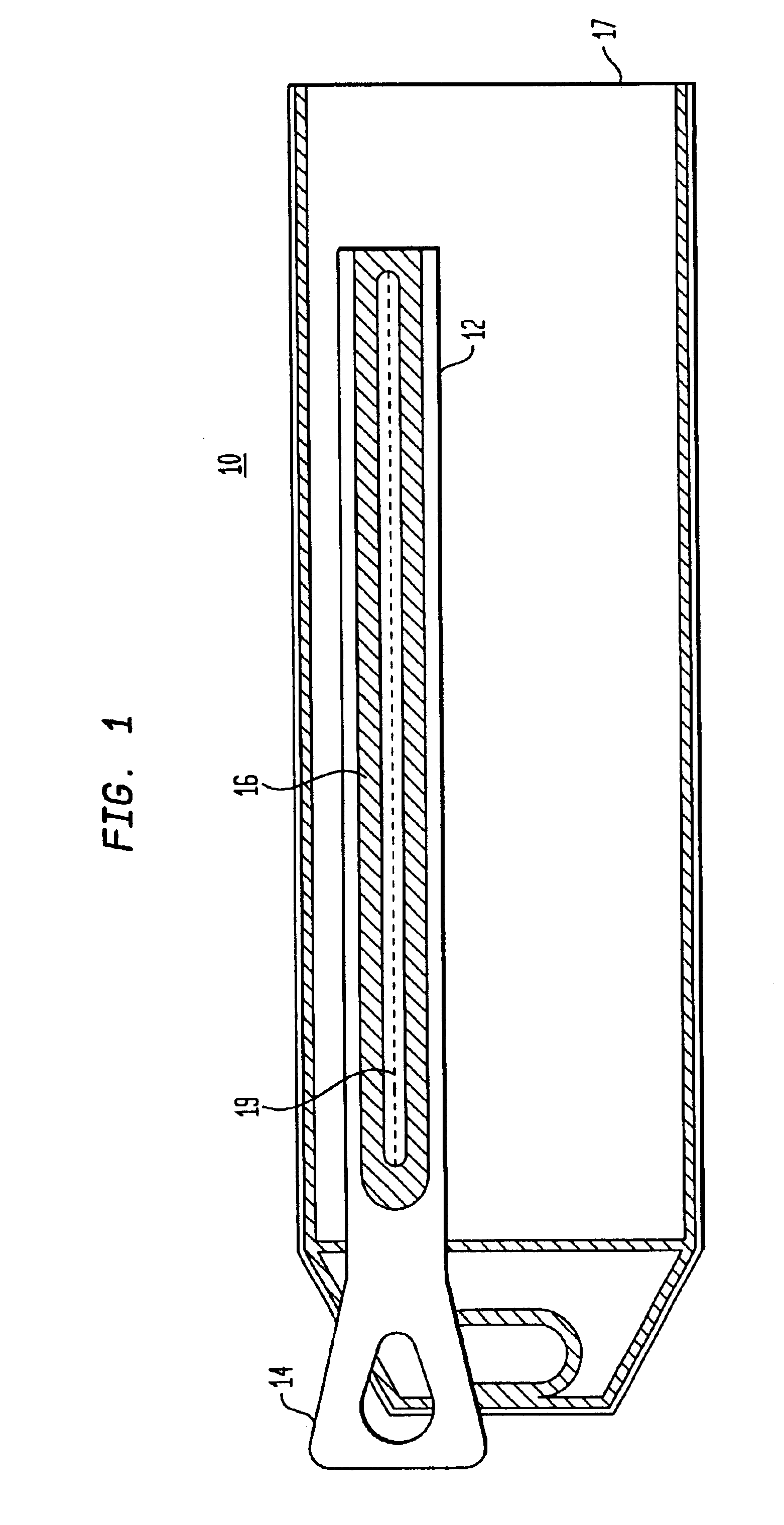High security opening apparatus for hermetically sealed containers
a technology of hermetically sealed containers and opening apparatuses, which is applied in the direction of flexible container closures, special purpose vessels, rafts, etc., can solve the problems putting a load on the vacuum sealing fabric, and harsh environment of use for such packages, so as to increase the durability of the container, increase the strength, and reduce the risk of compromising the integrity of the container
- Summary
- Abstract
- Description
- Claims
- Application Information
AI Technical Summary
Benefits of technology
Problems solved by technology
Method used
Image
Examples
examples
[0038]An opening in a bag made of 60″ translucent 9 oz flame retardant, vinyl fabric (Herculite T-9) was covered with a sealing means composed of red, 50″ 18 oz flame retardant, vinyl coated fabric and sealed using RF heat-sealing. The bag was hermetically and maintained the hermetic seal.
[0039]An opening in a Raft Package made of 56″ #107 navy 70-denier nylon taffeta, double coated with heat sealable urethane. (#2378-modified) was covered with a sealing means composed of 56″ black 840 denier nylon fabric double coated with urethane (per SPC-QC-112 Rev E, shiny finish). The sealing means was RF heat sealed to the package. The package was vacuum-sealed and maintained the vacuum.
PUM
 Login to View More
Login to View More Abstract
Description
Claims
Application Information
 Login to View More
Login to View More - R&D
- Intellectual Property
- Life Sciences
- Materials
- Tech Scout
- Unparalleled Data Quality
- Higher Quality Content
- 60% Fewer Hallucinations
Browse by: Latest US Patents, China's latest patents, Technical Efficacy Thesaurus, Application Domain, Technology Topic, Popular Technical Reports.
© 2025 PatSnap. All rights reserved.Legal|Privacy policy|Modern Slavery Act Transparency Statement|Sitemap|About US| Contact US: help@patsnap.com



